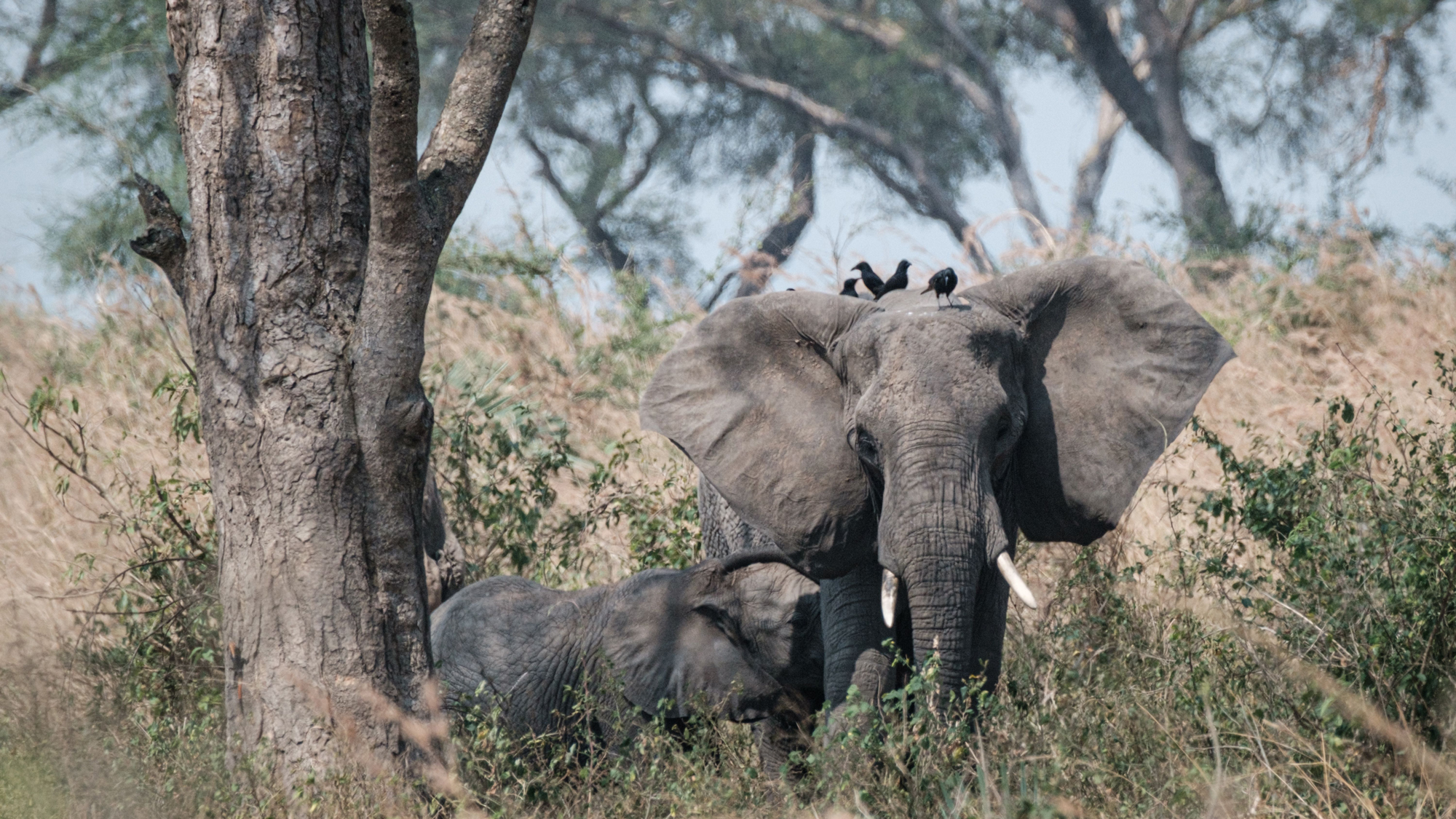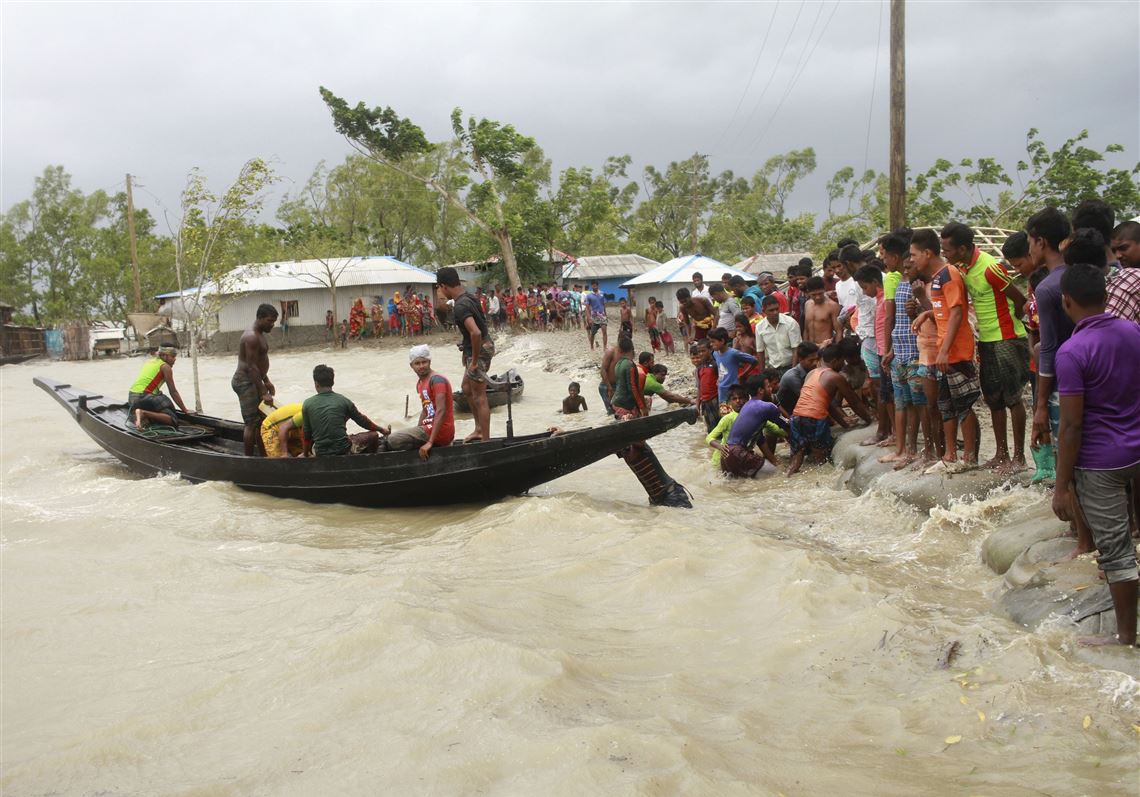FEATURE Our solutions are in nature — International Day for Biodiversity

GLOBAL – May 22 marks the International Day for Biological Diversity. The year 2020 is a "super year" for biological diversity and climate emergencies. Our world is facing an unprecedented environmental crisis with a large number of species on the brink of extinction and global temperatures continuing to rise. What is biodiversity? Why should we care? What would happen if it disappears? Watch this video to learn more. May 22 marks the International Day for Biological Diversity. The year 2020 is a "super year" for biological diversity and climate emergencies. Our world is facing an unprecedented environmental crisis with a large number of species on the brink of extinction and global temperatures continuing to rise. What is biodiversity? Why should we care? What would happen if it disappears? Watch this video to learn more. VIEW VIDEO GLOBAL Global Biodiversity Festival MAY 22-24, 2020 | Live feeds on Youtube

GLOBAL – International Day for Biological Diversity, celebrate with a virtual extravaganza featuring scientists, explorers and conservationists from across the globe! The Global Biodiversity Festival is a virtual weekend with a simple goal of bringing the amazing diversity of life on our planet, live into everyone’s home during these challenging times. From the 22nd – 24th of May, we'll share the amazing variety of life on our planet and the scientists, explorers, conservationists and filmmakers documenting and protecting it. We’ll highlight the weird and the wonderful, but also the conservation challenges, along with the good news success stories. The Global Biodiversity Festival is 100% free to join in. Our goal is to raise some money for some great conservation organizations around the world that do incredible work, but are being impacted by Covid-19. All we ask is that if you can, please make a donation, and all funds will be shared between the organizations. VIEW SCHEDULE World Mangrove Day Photo Contest

GLOBAL – We invite you to send us your best photos for a chance to be part of a special exhibition that will help highlight the beauty and importance of these undervalued coastal ecosystems. Photos will be judged by an expert panel and there will be special prizes this year for our three chosen winners. Wherever you live in the world and whether you are an amateur or professional, beginner or expert, young or old, this contest is for you! Your images have the power to inspire people and to help raise the profile of mangroves.
The deadline for entries in the 24th July! Don’t miss this opportunity to share your photos with the world and participate in our mission to protect these incredible ecosystems! Visit this link for some inspiration and find out other ways in which you can get involved with the Mangrove Action Project! READ MORE AFRICA A Major Oil Pipeline Project Strikes Deep at the Heart of Africa

EASTERN AFRICA – Imagine a tropical version of the Alaskan oil pipeline. Only longer. And passing through critical elephant, lion, and chimpanzee habitats and 12 forest reserves, skirting Africa’s largest lake, and crossing more than 200 rivers and thousands of farms before reaching the Indian Ocean — where its version of the Exxon Valdez disaster would pour crude oil into some of Africa’s most biodiverse mangroves and coral reefs. Such a project is ready for construction, to bring to the world oil from new oil fields in the heart of Africa. It is the East African Crude Oil Pipeline. “Transportation of oil will take place over mangrove and coral reef area,” where “intricate coastal environments make oil recovery and cleanup very difficult,” says WWF. Nearby, it points out, are two marine protected areas — the Pemba-Shimoni-Kisite reserve on the border with Kenya, and the Tanga Coelacanth marine park — which are noted for their coral reefs, dugongs, dolphins, and sea turtles. The oil fields and pipeline also threaten local communities. The Chinese-run Kingfisher field will be built in a “small, formerly isolated area,” where local communities are heavily dependent on natural resources such as fish and firewood, says the NCEA. It says the impacts report is unclear on whether the company plans to compensate communities for loss of common grazing land and water sources; and it warns there could also be ethnic tensions between locals and Congolese migrant workers. READ MORE AMERICA Millions donated to save Clarendon mangroves

JAMAICA – THE Inter-American Development Bank (IDB) has signed a landmark agreement for mangrove restoration with The University of the West Indies (The UWI)-based Solutions for Developing Countries (SODECO). The agreement — signed by Therese Turner-Jones, the IDB's country representative for Jamaica, and Professor Terrence Forrester, chief scientist at SODECO — will enhance Jamaica's ability to adapt and increase its resilience to climate change through a technical assistance programme on mangrove restoration. Financing for the restoration project will come from a grant valued at US$2.45 million, which is J$360 million, provided by the “UK Blue Carbon Fund”, which was established in the IDB in 2019, and financed by the United Kingdom's Department for Environment, Food and Rural Affairs. READ MORE ASIA The dire impact of removing mangroves in Andhra for a govt housing scheme

INDIA – Over the past three months, coastal Andhra Pradesh has lost several acres of mangrove cover, near the fishing villages outside Kakinada town. An extension of East Godavari’s Mada (mangrove) forests, the land has been levelled by the state government authorities, for a housing scheme. Under ‘YSR Pedalandiriki Illu’ (housing for the poor), one of the flagship schemes of the YSRCP government, the government plans to use the land to build houses for beneficiaries of the scheme. While the levelling work had begun around three months ago, the fishermen from nearby villages, who depended on the land for their livelihood, say that much of the work was carried out after the nationwide lockdown came into place from March 25. Since then, petitions have been filed with the National Green Tribunal (NGT) as well as the Andhra Pradesh High Court, objecting to the removal of the mangroves. While the High Court has ordered to maintain status quo on the construction activity, the NGT has constituted a five-member panel to look into the matter. Meanwhile, opposition parties have become more vocal in their stand against the use of the coastal land for the scheme, and young people from the state have launched an online campaign called Save Mada Forests, to bring attention to the problem. NGT urged to stop govt. from destroying mangrove forests

INDIA – NGT and Supreme Court advocate Sanjay Upadhyay has urged the National Green Tribunal (NGT) to stop the State government from destroying the mangrove forests in an extent of 100 acres in Kakinada. In the petition he filed on behalf of environmental activist Bolisetty Satyanarayana in Chennai on Friday, Mr. Upadhyay said that the mangrove forests, which provide livelihood to 54,000 people eking out a living by fishing, was being cleared by the government to be distributed as sites under a housing scheme. The mangrove forests that were of immense significance for their bio- and eco- diversity were being cleared against the lockdown norms announced by the Central government to arrest the spread of COVID-19, the petition mentioned. READ MORE Kakinada: Tension as cops prevent TDP team from visiting mangroves

INDIA – Tension prevailed when police intercepted a team appointed by TDP chief N Chandrababu Naidu with a mission to inspect alleged destruction caused to mangroves by the government to accommodate house sites here recently. The police asked the team to go back without visiting the mangrove site. A heated argument between the TDP leaders and the police followed. The TDP fact finding team was led by former home minister and Peddapuram MLA N China Rajappa and former minister Pitani Satyanarayana, former MLA Vanamadi Venkateswar Rao (Kondababu) and former excise minister KS Jawahar. Police are deployed in large numbers at the site as a precautionary measure. The police took all steps to prevent the people from going in large numbers to Kakinada port land area. Pitani Satyanarayana alleged that 50 per cent of mangroves situated in Dummulpet, Parlovapet were destroyed and the rest may also be destroyed. The mangroves served as protective cover for Kakinada people. The YSRC government has no respect for the law, he alleged. 'In view of the High court directive, the works in mangroves have been suspended to keep up the status quo,' he said. He welcomed the directive and decision of the High Court. He appealed to the court to make a comprehensive probe into the case relating to the mangroves and ultimately protect them. He also appealed that the NGT may make an extensive inspection and there by protect the mangroves." READ MORE New study a call to action for Myanmar’s mangroves

MYANMAR – A new study by the National University of Singapore (NUS) has found that mangrove deforestation in Myanmar is taking place at a faster rate than previously estimated. The NUS study, led by Edward Webb and Jose Don De Alban and published online in Environmental Research Letters on March 3, found that between 1996 – 2016 more than 60 per cent of all mangroves in Myanmar had been permanently or temporarily converted to other uses, including the growing of rice, oil palm, and rubber, as well as for urbanisation. Mangroves slow down climate change by sequestering carbon, and also conserve biodiversity, improve food and nutrition security and support human well-being, according to the International Institute for Sustainable Development(IISD). The institute says sustainable management of mangroves can help achieve the 2030 Agenda for Sustainable Development of the United Nations (UN). READ MORE ‘Submerged mangrove forests are scientific wonders — and home to rich biodiversity

INDIA – Mangrove communities include fish, insects, shellfish, birds of many species (like pelicans, egrets and spoonbills), saltwater crocodiles, monkeys, algae and fungi. Many organisms, especially fish, spend their early years in the protection of the mangroves and their intricate belowand above-ground root systems. Mangroves, along with sea grasses and wetlands, comprise the ‘blue carbon’ ecosystem of stored carbon in sediments along many tropical and subtropical coastal zones. Their complex aerial and submerged root systems moderate current flows and the canopies moderate wind flow — they are the interface between the wetlands and sea grass communities for the continental flow of and solutes into the ecosystem. Mangroves also supply fuelwood and other forest products, like food and medicine, for people. the mangroves form an environmental sequence, with the red mangroves closest to the shore, then the black mangroves in sites that can be periodically inundated, and then, the white mangroves above the high tide line. The mangroves do so much for the planet — but we are losing them very disturbingly and rapidly to oil spills, pollution and shoreline development. READ MORE From mangrove to mountain: Building coastal resilience in Timor-Leste
.jpeg)
EAST TIMOR – At the heart of the Coral Triangle – the global centre of marine biodiversity – lies the small island developing state of Timor-Leste. Indigenous legend holds that Timór Lorosa'e (‘East Rising Sun’) was created by a great crocodile, Lafaek Diak, that transformed itself into land so that its human friends could live there. Imposing mountains – the spine of the mythological crocodile – dominate the centre of the country. Ancient marine fossils litter their peaks. Around two-thirds of the nation's people live in the narrow plain running along the country’s coastline, primarily making their living through fishing and farming. Offshore, in the rich waters of the Coral Triangle, is a powerhouse, reef-building coral biodiversity hotspot, sometimes called 'the Amazon of the seas' due to its natural abundance and importance as habitat for marine species. READ MORE Deadly cyclone cuts destructive path in India and Bangladesh

INDIA – Wide swaths of coastal India and Bangladesh were flooded and millions were without power Thursday as Cyclone Amphan, the most powerful storm to hit the region in more than a decade, killed over 80 people and cut a path of destruction that is still being assessed. Many parts of the Indian metropolis of Kolkata, home to more than 14 million people, were under water, and its airport was closed briefly by flooding. Roads were littered with uprooted trees and lamp posts, electricity and communication lines were down and centuries-old buildings were damaged. Officials in both countries said the full extent of the damage caused by the cyclone was not known because communications to many places were cut. Hundreds of thousands of people were evacuated ahead of the storm, a process complicated by the coronavirus pandemic. READ MORE
Like this newsletter?
Pease consider donating to MAP to keep it going.
Giving could never be easier | ACTION ALERTS International Day for Biodiversity
May 22, 2020 – READ MORE Save Kakinada mangrove forest – Sign the Petition World Turtle Day May 23, 2020 – View More Enough! Pledging zero tolerance to attacks against environmental and human rights defenders. SIGN THE PETITION PETITION – Save Malaysia's Sea Turtles
A proposed land reclamation project and sand mining in Malaysia threaten a nesting ground of vulnerable Olive Ridley turtles and a marine biodiversity hotspot.. Please SIGN! PETITION – Save Penang! Reject the 3-Islands Reclamation!
The lack of public consultation and detailed information about the project is shocking in view of the size of proposed reclamation which is 4,500 acres or 7 square miles
PLEASE SIGN
PETITION – Save Pulau Kukup National Park – second largest mangrove island in the world. Sign The Petition Like this newsletter? Pease consider donating to MAP to keep it going. Giving could never be easier 
Mangrove Restoration Map VIEW MAP HERE 
Restoring The Natural Mangrove Forest
Watch movie 
Community Based Ecological Mangrove Restoration in Rufiji Delta VIEW VIDEO Video: Mangroves for the Future – A look bacK. As the latest phase of Mangroves for the Future (MFF) draws to a close, this video highlights some of the project’s most successful initiatives – from local women supporting national park management in Viet Nam to an island in the Maldives that has become a model for waste management, and everything in between. View Here WANT TO GET INVOLVED?
Follow and Join MAP!
   
Like this newsletter? Pease consider donating to MAP to keep it going. Giving could never be easier 

VOLUNTEER OPPORTUNITY 
MANGROVE ISSUES Want to learn more about mangroves?
Our short presentation will give you a better understanding of the issues we are working to solve. WATCH PRESENTATION What is CBEMR? Easy to follow fact sheet – CLICK HERE What is EPIC? – The Ecosystems Protecting Infrastructure and Communities (EPIC) project: the role of ecosystems as protective barriers against climate induced hazards MANGROVES APP AVAILABLE
A pictorial field guide for easy identification of various mangrove species and learning about the mangroves ecosystem. CLICK HERE View MAP’s uploaded Videos at MAPmangrover’sChannel
Question Your Shrimp Consumer/Markets Campaign!
WATCH VIDEO WATCH – Mangroves: how they help the ocean
 Mangrove Restoration in Asia – Watch Short Video The Value of Mangrove Forests View Video CBEMR Experience Exchange MAP 2017 English Subtitles
VIEW THE VIDEO Mangroves: Guidebook to Malaysia – Click Here
Mangrove rehabilitation in Asia – Local Action and cross-border Transfer of Knowledge for the Conservation of Climate, Forests and Biodiversity VIEW VIDEOS HERE SHARE MAP'S VISION
CLICK HERE to watch short introductory video. Together we can work "at the roots of the sea". Our short documentary, Reducing the Risk of Disaster through Nature-Based Solutions : Mangroves

Exclusive Interview with Alfredo Quarto, Co-Founder and Executive Director of Mangrove Action Project – See more
Marvellous Mangroves Curriculum The Marvellous Mangroves Education Forum is an online hub for those utilizing the Marvellous Mangroves (MM) Curriculum. It gives students, teachers and anyone interested in mangroves, the opportunity to learn and share ideas themed around the curriculum, to connect and communicate with others around the globe whilst exploring mangroves from your computer or on the go. VISIT 
The award-winning Marvellous Mangroves (MM) curriculum educates children on the importance of mangroves and their ecological functions, teaching them about modern challenges and mechanisms for sustainability. VIEW VIDEO Marvellous Mangroves Curriculum in Bangladesh – WATCH VIDEO
MARVELLOUS MANGROVES IN BRAZIL
En Portuges 
Marvellous Mangroves – A Curriculum-Based Teachers Guide. FOR MORE ON MAPs AWARD WINNING CHINA MANGROVE CURRICULUM VISIT

VIMEO SHOW
VISIT OUR "MM" WEBPAGE Check out our presentation for more details on Marvellous Mangroves Read this 10 page history of the development of MAP’s educational curriculum VIEW DOCUMENT
Article in Canada's Green Teacher Magazine – Read More
Like this newsletter? Pease consider donating to MAP to keep it going. Giving could never be easier 
Green Planet Fundraising Assists MAP – LEARN MORE
Volunteer Opportunities with Mangrove Action Project CLICK HERE
"Question Your Shrimp" Campaign Question Your Shrimp- Don't Buy or Sell Imported Tropical Shrimp! Sign the Petition Learn more about the affects of the shrimp industry on mangroves by visiting our blog
Editor’s Note: Mangrove Action Project’s Executive Director, Alfredo Quarto was interviewed about shrimp by Green Acre Radio’s Martha Baskin
LISTEN TO INTERVIEW Sign the Consumer's Pledge to avoid imported shrimp
Not yet a MAP News subscriber?
Click here to subscribe. Note to Our Readers: We strive to keep active links in our newsletter. However, due to circumstances beyond our control, occasionally links to stories may become broken. If you find a link to a story is not functioning, please cut and paste the headline into your browser search bar. In most cases you should be able to locate the original story.
|











.jpeg)
















